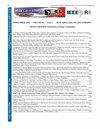Illustrating Classic Brazilian Books using a Text-To-Image Diffusion Model
IF 1.3
4区 工程技术
Q3 COMPUTER SCIENCE, INFORMATION SYSTEMS
引用次数: 0
Abstract
In recent years, Generative Artificial Intelligence (GenAI) has undergone a profound transformation in addressing intricate tasks involving diverse modalities such as textual, auditory, visual, and pictorial generation. Within this spectrum, text-to-image (TTI) models have emerged as a formidable approach to generating varied and aesthetically appealing compositions, spanning applications from artistic creation to realistic facial synthesis, and demonstrating significant advancements in computer vision, image processing, and multimodal tasks. The advent of Latent Diffusion Models (LDMs) signifies a paradigm shift in the domain of AI capabilities. This article delves into the feasibility of employing the Stable Diffusion LDM to illustrate literary works. For this exploration, seven classic Brazilian books have been selected as case studies. The objective is to ascertain the practicality of this endeavor and to evaluate the potential of Stable Diffusion in producing illustrations that augment and enrich the reader's experience. We will outline the beneficial aspects, such as the capacity to generate distinctive and contextually pertinent images, as well as the drawbacks, including any shortcomings in faithfully capturing the essence of intricate literary depictions. Through this study, we aim to provide a comprehensive assessment of the viability and efficacy of utilizing AI-generated illustrations in literary contexts, elucidating both the prospects and challenges encountered in this pioneering application of technology.使用文本到图像扩散模型说明经典巴西书籍
近年来,生成式人工智能(GenAI)在处理涉及文本、听觉、视觉和图像生成等多种模式的复杂任务方面发生了深刻的转变。在这个范围内,文本到图像(TTI)模型已经成为一种强大的方法,可以生成各种美观的作品,从艺术创作到逼真的面部合成,应用范围从艺术创作到逼真的面部合成,并在计算机视觉、图像处理和多模式任务方面取得了重大进展。潜在扩散模型(ldm)的出现标志着人工智能能力领域的范式转变。本文探讨了用稳定扩散LDM来说明文学作品的可行性。在这一探索中,选择了七本经典的巴西书籍作为案例研究。目的是确定这一努力的实用性,并评估稳定扩散在生产插图,增加和丰富读者的经验的潜力。我们将概述其有益的方面,如产生独特的和上下文相关的图像的能力,以及缺点,包括忠实地捕捉复杂的文学描绘的本质的任何缺点。通过这项研究,我们旨在全面评估在文学语境中使用人工智能生成插图的可行性和有效性,阐明这一开创性技术应用的前景和面临的挑战。
本文章由计算机程序翻译,如有差异,请以英文原文为准。
求助全文
约1分钟内获得全文
求助全文
来源期刊

IEEE Latin America Transactions
COMPUTER SCIENCE, INFORMATION SYSTEMS-ENGINEERING, ELECTRICAL & ELECTRONIC
CiteScore
3.50
自引率
7.70%
发文量
192
审稿时长
3-8 weeks
期刊介绍:
IEEE Latin America Transactions (IEEE LATAM) is an interdisciplinary journal focused on the dissemination of original and quality research papers / review articles in Spanish and Portuguese of emerging topics in three main areas: Computing, Electric Energy and Electronics. Some of the sub-areas of the journal are, but not limited to: Automatic control, communications, instrumentation, artificial intelligence, power and industrial electronics, fault diagnosis and detection, transportation electrification, internet of things, electrical machines, circuits and systems, biomedicine and biomedical / haptic applications, secure communications, robotics, sensors and actuators, computer networks, smart grids, among others.
 求助内容:
求助内容: 应助结果提醒方式:
应助结果提醒方式:


